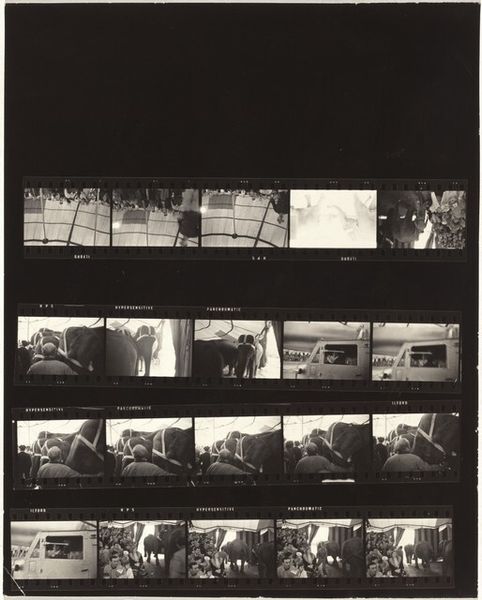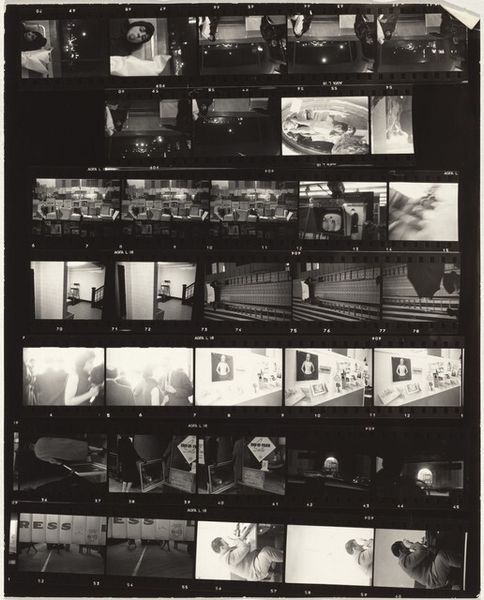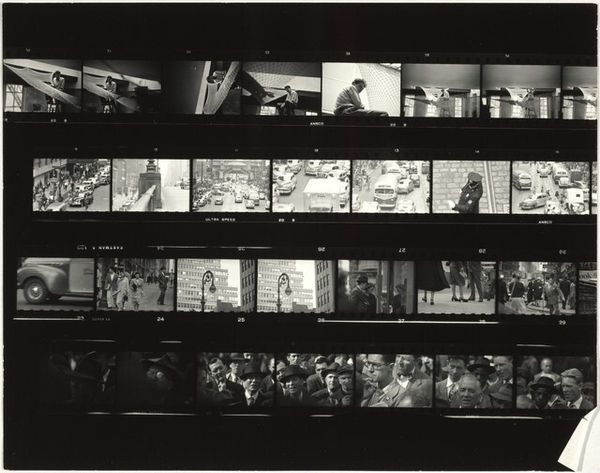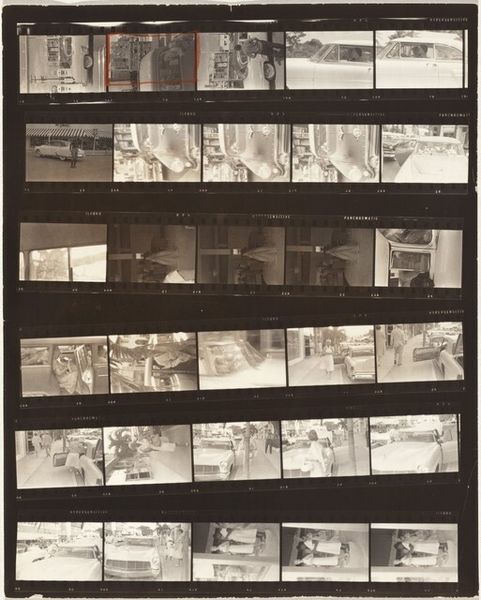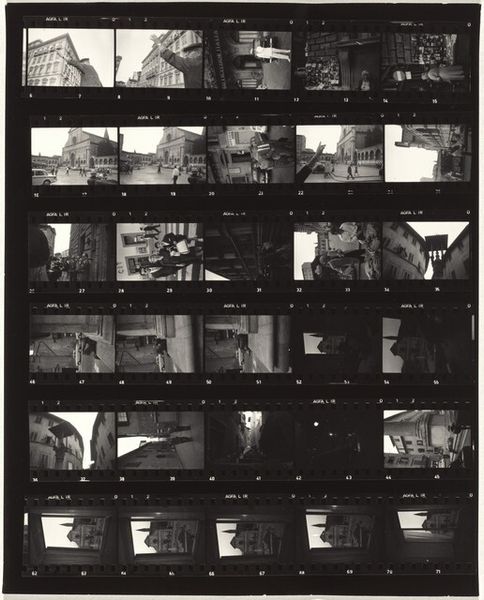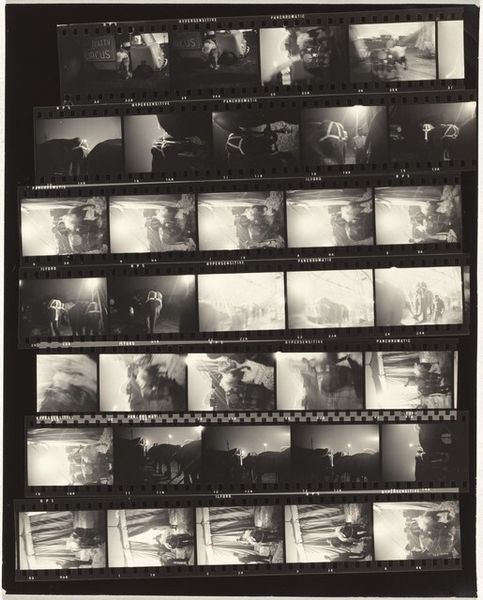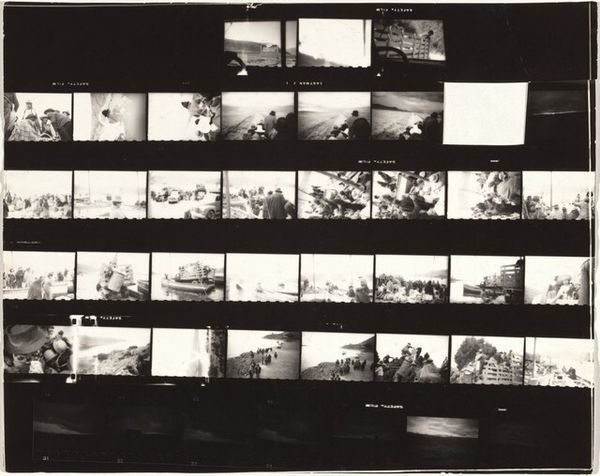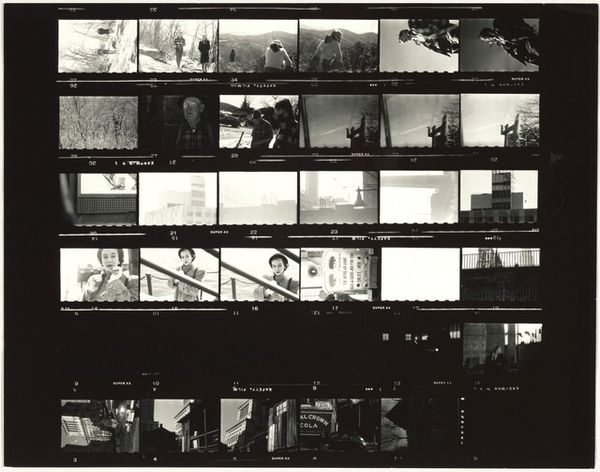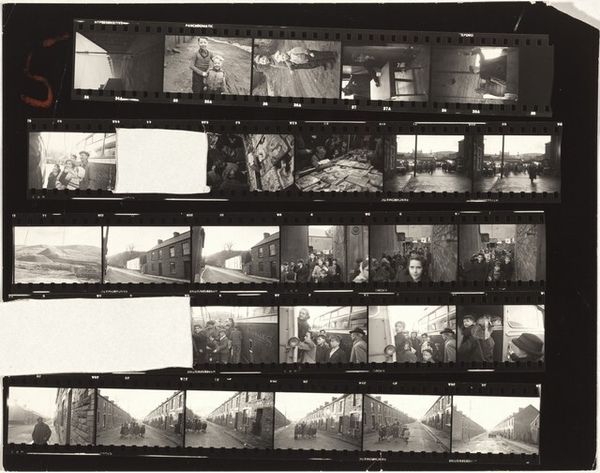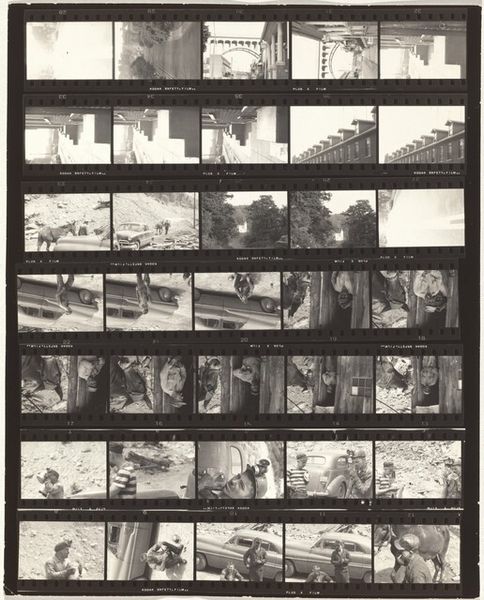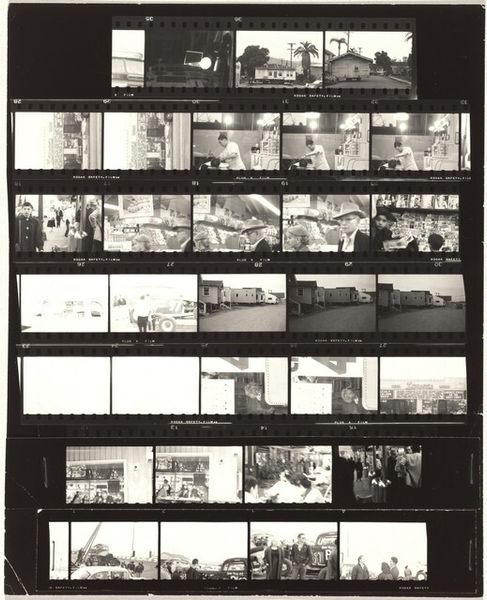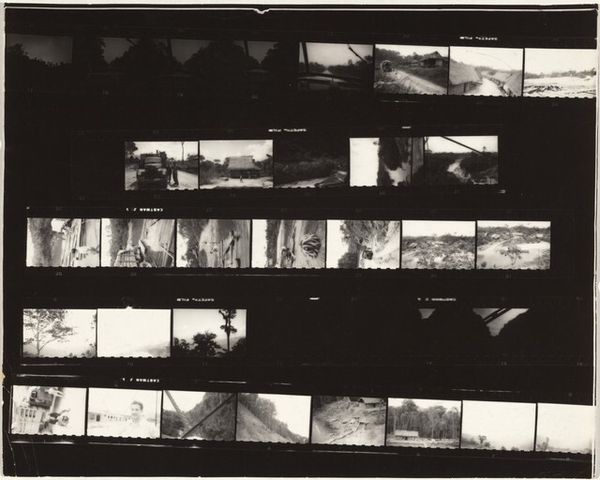
contact-print, photography
#
film photography
#
contact-print
#
street-photography
#
dark monochromatic
#
photography
#
monochrome photography
#
ashcan-school
#
monochrome
#
monochrome
Dimensions: overall: 21.7 x 24.1 cm (8 9/16 x 9 1/2 in.)
Copyright: National Gallery of Art: CC0 1.0
Editor: Here we have Robert Frank’s 1963 contact print, "Allen Ginsberg no number." The tightly arranged frames feel like a surveillance reel, documenting the subject in fragmented moments. How do you interpret this work within its historical context? Curator: The contact sheet, the array of moments, inherently speaks to surveillance, to a relentless cataloging that echoes the very societal forces Ginsberg and his contemporaries railed against. This wasn't simply portraiture; it was a capture of a counter-culture icon at a time of immense social and political upheaval. Editor: So, it's about resistance through observation? The "Ashcan School" tag suggests a focus on everyday life... Curator: Precisely! Consider the "Ashcan School" influence, emphasizing the gritty realism of urban life. Frank is not just photographing Ginsberg, he is capturing a feeling of unease and a critique of mainstream America. Look at the stark contrast, the grainy texture—it rejects idealization and forces us to confront the rawness of reality. In what ways do you think Ginsberg, as the subject, plays a role in this critique? Editor: I see. Ginsberg's presence, even in these fragmented images, challenges conventional ideas of beauty and conformity, embodying the Beat Generation's rejection of societal norms. The composition is intentionally disruptive. Curator: And disruption is key. Frank uses the contact sheet itself as a form, breaking down the singular image, rejecting the traditional portrait's power to canonize. Each frame offers a glimpse, but none provide a complete, digestible narrative. This deliberate ambiguity invites us to question not just Ginsberg’s identity, but also the nature of photographic representation itself. Do you see any element of time within these images? Editor: The contact sheet creates a sense of duration, almost like film stills. Curator: Exactly! This work reflects not only the political but the passage of time within social contexts, and of its own making too. It suggests a world in flux, constantly observed, interpreted, and ultimately, resisted. Editor: That’s insightful, I now see how this photograph works on multiple levels, resisting simple interpretation and challenging conventional ideas about identity, and politics of representation. Thank you!
Comments
No comments
Be the first to comment and join the conversation on the ultimate creative platform.
